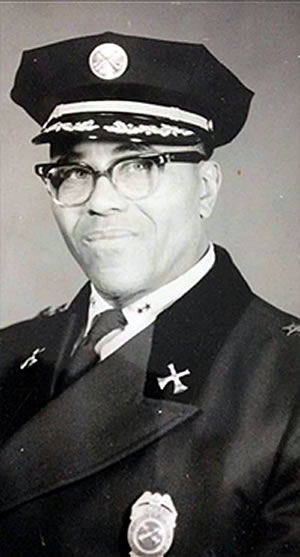 Early Life:
Early Life:
Charles S. Lockhart was born August 13, 1903 in Mammoth, West Virginia to his parents Calvin C. Lockhart and Daisy Chapman Lockhart. However, despite being born in West Virginia, Lockhart and his family would have spent most of their time in Illinois. Lockhart’s father worked originally near Canton in a coal mine before it closed and they had to move to Springfield so he could continue to work in the mines.
Life in Springfield
Lockhart and his family first moved to Springfield in 1921. He was eighteen years old at the time and while he worked on his education he followed in his father’s footsteps and began working in a coal mine in the area at Ninth and Ash Streets known as the Woodside Coal Mine in the mid to late-1920s. He worked in coal mining until 1929 when he began his career with Fire House 5 in Springfield.
It was not long after moving to Springfield that Lockhart found the woman he soon married. In 1924, just three years after moving to the area, he married Cozetta Flake. Together they had five children, three daughters and two sons, and spent their lives with each other.
In Springfield, Lockhart was a member of the local Union Baptist Church. In this church, Lockhart held a number of roles while being a member. He served as the treasurer and superintendent of the Sunday School program through the church, was on the Senior Citizens Commission, and worked as a deacon. He also sang in the Mighty Men of Union Chorus at the church during their gatherings.
Lockhart was involved in a number of local groups including Central Lodge 3, where he served as its treasurer for almost thirty years. He also was a member of both Menelik Consistory 49 and Kamar Temple 56. Lockhart was widely recognized for his various acts of service to the community of Springfield.
Later Life
Lockhart retired as the Deputy Fire Chief of Fire House 5 in 1966, ending a career there which lasted thirty-seven years. Not long after, he went to work for the Department of Transportation in Springfield. He took over as their security director in 1966 and worked through to 1977, when he retired once again.
Lockhart’s wife, Cozetta, would precede him in death in 1990 at the age of eighty-five. He lived to be ninety years old and passed away on March 24, 1994 leaving behind a full life of helping the people of Springfield as a fireman, security director, and a boxing coach. Lockhart is buried alongside his wife at Oak Ridge Cemetery here in Springfield, Illinois.
The Original Firehouse 5
By the time Lockhart had begun working at Firehouse 5, there were eight other African American men who worked there. This specific Fire House was meant for African Americans who wanted to work as firemen, while the others in the city were operated solely by white firemen.
Firehouse 5 was responsible for everything east of 10th Street. If there was a second alarm at a fire downtown, they assisted there too. After the 1930's when Lake Springfield was built, Firehouse 5 was responsible for southern Springfield, too.
Many of the fires they handled were either roof fires or grass fires, and they never seemed to handle larger building fires. When their assistance was needed, they used horse-drawn fire engines to make their way to the emergency. This meant that at the time, part of the Fire House had to include stables for the horses to live in. However, by the early 1930s, the horses would be phased out and the Firehouse received its first enclosed cab fire truck.
After horses were no longer used at Fire House 5, the crew converted the station's upper floor to a training facility for amateur boxers, with permission from their fire chief. From the 1930s until after World War II, Lockhart coached Golden Glove boxers there. In 1992, he was inducted into the Springfield Sports Hall of Fame as a Friend of Sports for his work in boxing.
In 1954, Firehouse 5 moved from 1310 E. Adams Street to a new location near 18th and Clay Streets. This led to a number of changes over time, as the historic building no longer served its original purpose. Today, it serves as the location of Central Lodge 3 and is in the works to one day become a Black Firehouse Museum.